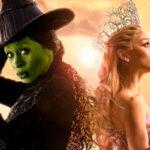

Released in 1958, “Vertigo,” directed by the master of suspense Alfred Hitchcock, is one of the most acclaimed masterpieces in the history of cinema. The plot revolves around retired detective John “Scottie” Ferguson (James Stewart), who, suffering from acrophobia, is hired to follow the mysterious Madeleine Elster (Kim Novak), the wife of an old friend. The film is a deep exploration of themes such as obsession, identity, and love, wrapped in an atmosphere of mystery and tension. Although its initial reception was mixed, “Vertigo” gradually gained classic status and is frequently cited in lists of the greatest films of all time.
This text gathers ten fascinating curiosities about “Vertigo,” revealing details about its production, technical innovations, and the lasting impact it continues to have on audiences and film critics.
1 – THE TITLE
“Vertigo,” is a medical term that refers to the sensation that you or your surroundings are spinning or moving when they are not. This is quite fitting, as the protagonist, Scottie, suffers from acrophobia and experiences vertigo during the film.
2 – LITERARY ADAPTATION
The film is based on the novel “D’entre les morts” (From Among the Dead), written by Pierre Boileau and Thomas Narcejac. Hitchcock was eager to acquire the rights to the book, as he had missed the opportunity to adapt another work by the same authors, which resulted in “Les Diaboliques” (1955), directed by Henri-Georges Clouzot. “Vertigo” freely adapts the French novel, but Hitchcock made several changes to tailor the story to his cinematic style.
3 – TECHNICAL INNOVATION
Hitchcock used an innovative camera technique called “dolly zoom” to represent Scottie’s acrophobia. This effect creates a sensation of spatial distortion, where the background appears to recede while the foreground remains the same. This effect, also known as the “Vertigo effect,” has become an iconic cinematographic technique and is widely used to convey discomfort or disorientation in films and TV series.
4 – INITIAL RECEPTION
When it was released in 1958, “Vertigo” received mixed reviews and was not a major box office success. Some critics found the film slow and confusing. However, over the years, the film’s reputation has grown considerably. Today, it is widely considered a masterpiece and frequently appears on lists of the greatest films of all time.
5 – CONNECTION WITH SALVADOR DALÍ
Hitchcock had a great interest in psychoanalysis and dreams, which was reflected in “Vertigo.” He had previously collaborated with the famous surrealist artist Salvador Dalí on “Spellbound” (1945), and although Dalí was not directly involved in “Vertigo,” the influence of surrealism and psychoanalytic themes is evident in the film’s aesthetics and narrative.
6 – FILMING LOCATION
Much of the film was shot in San Francisco, California, and the city plays a crucial role in the film’s atmosphere. Iconic locations such as the Golden Gate Bridge, Coit Tower, and Mission San Juan Bautista were used in the filming. The choice of San Francisco, with its steep hills and urban landscapes, helped intensify the sense of vertigo and danger that permeates the film.
7 – JAMES STEWART’S PERFORMANCE
James Stewart, a frequent collaborator of Hitchcock, delivered one of the most complex performances of his career in “Vertigo.” His portrayal of Scottie, a man tormented by obsession and fear, is considered one of the best of his career. However, Stewart was 50 years old at the time of filming, and some critics felt he was too old for the role, especially opposite the young Kim Novak.
8 – KIM NOVAK’S ROLE
Kim Novak, who portrayed Madeleine Elster, was not Hitchcock’s original choice for the role. The director’s first choice was Vera Miles, but she became pregnant and couldn’t participate in the film. Novak brought a blend of vulnerability and mystery to her role, which became central to the film’s emotional impact. Her dual performance as Madeleine and Judy Barton is crucial to the unfolding of the plot.
9 – THEMES OF OBSESSION AND IDENTITY
“Vertigo” is a profound study of obsession and identity. Scottie’s character becomes obsessed with Madeleine, leading him to try to transform Judy into Madeleine after her apparent death. The film explores how identity can be shaped and manipulated and how obsession can distort reality and lead to self-destruction.
10 – LATE RECOGNITION
The critical reassessment of “Vertigo” over the years has been remarkable. In 2012, the film was voted the greatest film of all time by Sight & Sound magazine, surpassing Orson Welles’ “Citizen Kane,” which had held the top spot since 1962. This late recognition underscores the depth and complexity of the film, which continues to influence filmmakers and captivate audiences decades after its release.
“Vertigo” not only solidified Alfred Hitchcock as the master of suspense but also showcased his talent in exploring psychological complexities through cinematic narrative. The film’s curiosities reveal the depth and innovation involved in its creation, from the choice of filming locations in San Francisco to innovative techniques like the “dolly zoom” to convey vertigo. The memorable performances of James Stewart and Kim Novak, coupled with rich symbolism and themes of obsession and identity, secured the film a special place in cinema history.
The critical reassessment over the years, culminating in its coronation by Sight & Sound magazine as the greatest film of all time in 2012, confirms the enduring impact and relevance of “Vertigo.” This classic continues to inspire and captivate new generations of audiences and filmmakers, remaining an essential reference in the study of the seventh art.








